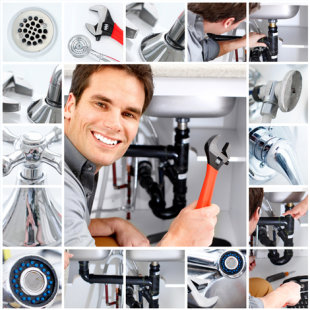
John Blatchford, Handyman and Operations Manager at ProMaster Home Repair, and Sean Greene, expert at Evidence Solutions Inc., have offered their expert knowledge and experience and gave us some simple DIY tips to unblock your kitchen sink.
Greene recomends pouring some baking soda and vinegar down the drain (about 2-3 tablespoons of each). This helps loosen up a lot of the gunk that gets trapped in your sink, and can help to clear the drain without calling a plumber.
For trickier drain issues, Blatchford suggests different tips to help you conquer the problems once and for all. First, you can wiggle in to get under your sink and remove the "P" trap which is the curving part of the pipe toward the bottom that connects your sink to the wall. There will be 2 plastic screw pieces (collars) --- one on the sink side and one on the wall side of this p trap pipe that can both be loosened and removed to get the P trap off.
This can be pretty easily done with channel-lock pliers, the pliers that adjust to get bigger and smaller. You should loosen these up a bit and once almost off, you can allow for the water that sits in this pipe to drain out into a pan or bucket. Cleaning this out will help the water flow much more easily.
The next place that grime likes to hang out is in what's called the "popup" which is directly under the sink. This is what stops the water flow when you pull the knob on the top side of the sink. There should be a small plastic or metal cap that sticks out and that can be unscrewed and then pulled out, revealing the metal rod and mechanism that often holds grime. Clean this out thoroughly, and your sink should be good to go.
The last thing would be to run the water and make sure your cleaning helped the problem. It's then a good idea to continue to run the water and climb back under to make sure no leaks are going on and that nothing else is corroded or broken.
No comments:
Post a Comment